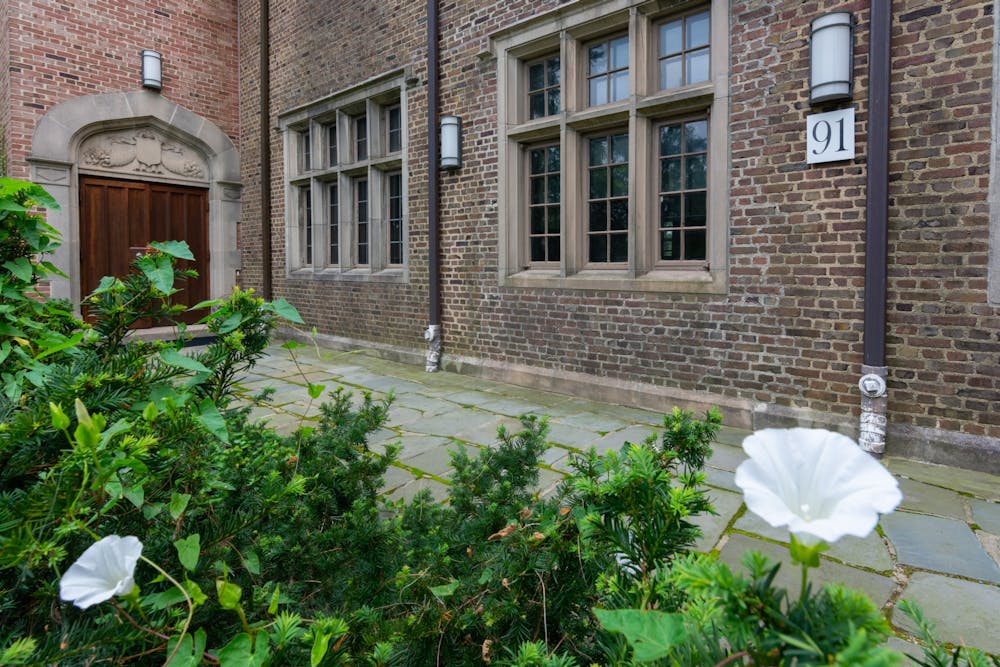The University is planning to relocate former eating club Court Clubhouse across Prospect Avenue, demolishing three Victorian-style homes in the process.
The proposal, which would create space for a Prospect Avenue entrance for the University’s planned home for Environmental Studies and the School of Engineering and Applied Sciences (ES + SEAS), has seen backlash from several local groups and members of the community. These critics have noted the plan’s disruption to the current state of Prospect Avenue and the Princeton Historic District.
The University, however, views the move as being in service of its mission to foster innovation, scientific discovery, and collaboration.
“The ES and SEAS project will enable breakthrough teaching and research in service of humanity while enhancing the public experience of Prospect Avenue,” Deputy University Spokesperson Michael Hotchkiss told The Daily Princetonian. “Through a careful, thoughtful planning and design process, we determined that the project requires use of the site at 91 Prospect.”
The University is currently seeking an exception to municipal land laws, commonly called a variance, from the Princeton Planning Board for the move.
The Historical Preservation Commission (HPC), under the municipality of Princeton, voted on June 7, 2021, to not endorse the University’s relocation plan on Prospect Avenue, with members of the commission arguing in part that the plans were unimpressive, did not match the architectural styles of the surrounding district, and had greater costs than benefits. The HPC serves an advisory role for the Princeton Planning Board on development applications in areas of historical importance or significance.
Hotchkiss disagreed.
“The four buildings of the new ES and SEAS neighborhood will be carefully integrated into the surrounding context and will provide strong connections to nature and outdoor spaces,” he wrote.

Hotchkiss also discussed the anticipated benefits of the ES + SEAS “neighborhood,” citing research possibilities centered on climate change mitigation, new pharmaceuticals and vaccines, and energy efficiency.
In the June 7 HPC meeting, University Architect Ron McCoy similarly argued that the clubhouse move would not disturb the state of the historic district and that simply moving the clubhouse would not damage its historical value.
“There’s nothing particular regarding the historic preservation standards, for a building being tied to its site,” he said.
Hotchkiss added to this, emphasizing that the University is “focused on preserving that structure [Court Clubhouse] and allowing for it to continue to be a part of a vibrant Prospect Avenue.”

The Princeton Prospect Foundation (PPF), which supports and helps to preserve the University’s eating clubs, opposes the University’s Court Clubhouse proposal. The PPF argues that the move would “cause unjustified harm to the Princeton Historic District am[i]d the historic streetscape” and therefore violate National Park Service guidelines for construction on existing historic districts.
The foundation also voiced concerns about municipal land use, arguing that the requirements for seeking a variance have not been met by the University, and cited environmental damage and public discontent as additional reasoning for the variance to be denied.
A petition by the Save Prospect Coalition, a coalition including local community members, alumni, the Princeton Prospect Foundation, and the Graduate Inter-Club Council, has gathered over 1,500 signatures to try and convince the University to “develop a design that follows National Park Service policy by keeping the Court Clubhouse within the Historic District and saving the three Victorians of Faculty Row.”
Town residents offered their opinions on the proposed move. James Bash, a local resident, stated in a letter to the editor of Town Topics that demolishing the Victorian homes would be upsetting because the Victorian homes have “added charm and warmth to the Prospect neighborhood for so many years.”
“We moved here 11 years ago, as the Times article suggests, for the historic architecture, walkable town, good schools, and access to transit to our places of employment. Princeton University’s plans aim to take half of that away,” Princeton resident Lydia Hamilton wrote in Town Topics.
Sandy Harrison ’74, Board Chair of the PPF, noted that the foundation and many in the general public are not opposed to the overall expansions of ES + SEAS. The PPF suggests that instead of moving the Court Clubhouse, the new entrance could be built in an open plot of land due east of the current location of the clubhouse, which is outside of the current historic district.
“We believe [the University] can rework just three percent of their project to help with the historic preservation of the district,” Harrison said in an interview with the ‘Prince.’
On Sept. 23, 2021, the Princeton Planning Board will meet for a third and, most likely, final time to discuss the University’s proposed variance before voting on whether to approve it. This meeting will take public comment and opinion regarding the issue.
Harrison was optimistic for the upcoming meeting, arguing that “a combination of the HPC recommendation, violations of municipal land use laws, and enormous town opposition” would help make the public’s case in denying the variance.
Still, Hotchkiss seemed optimistic about the project’s future.
“We look forward to continuing to share our vision for this project with the municipality’s planning board,” Hotchkiss told the ‘Prince,’ “and for all members of our community to learn more about the project.”
The ES + SEAS Project is set to be completed by the fall of 2024, spanning approximately 660,000 gross square feet. For more information, click here.
Editor’s Note: This piece was updated on Sept. 1 to include comment from the University’s Office of Communications. The ‘Prince’ regrets the omission.








